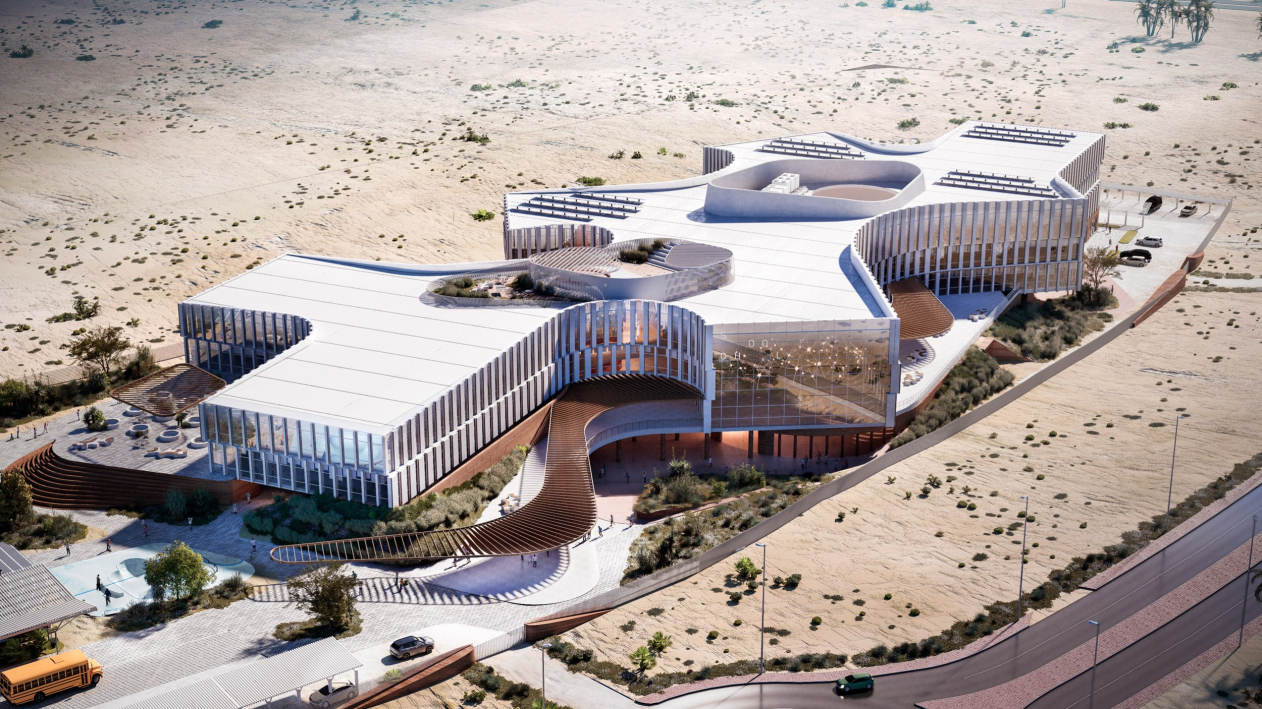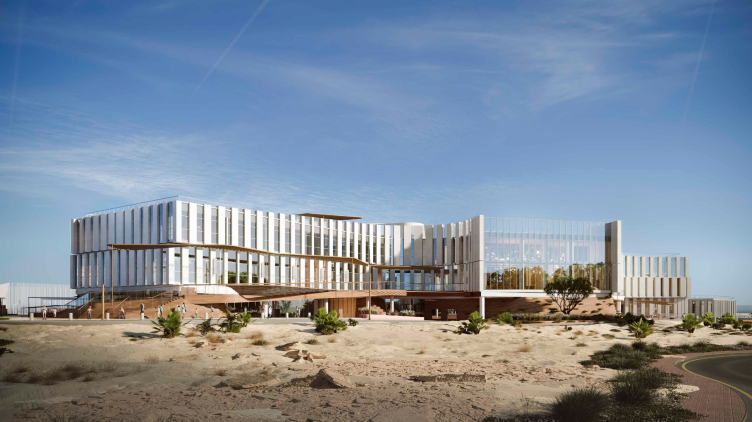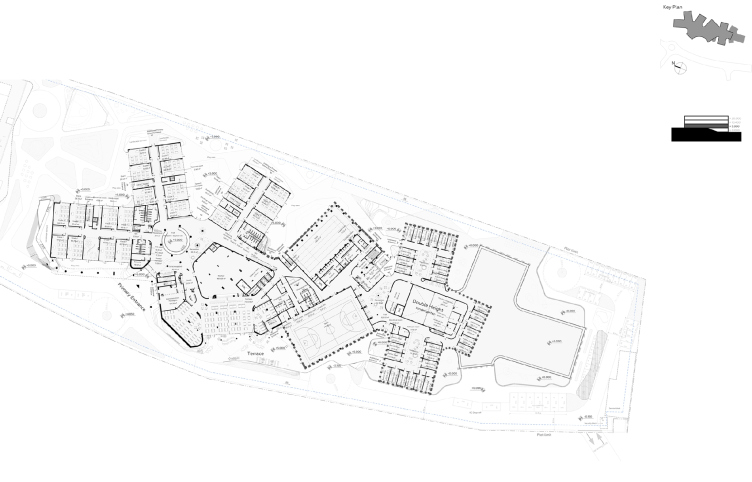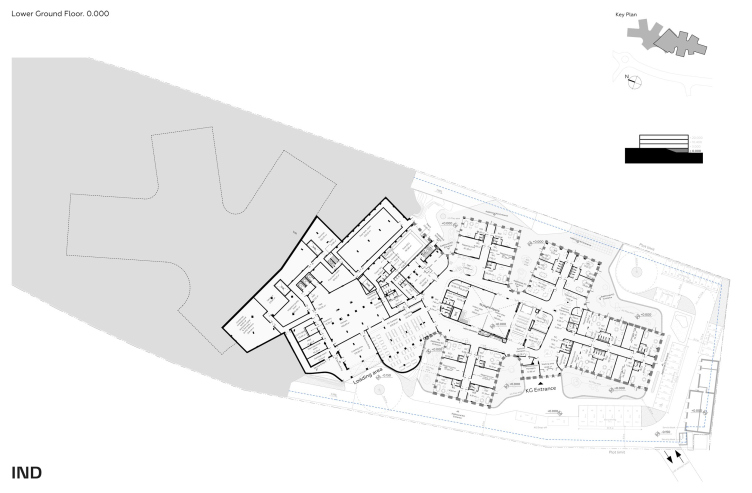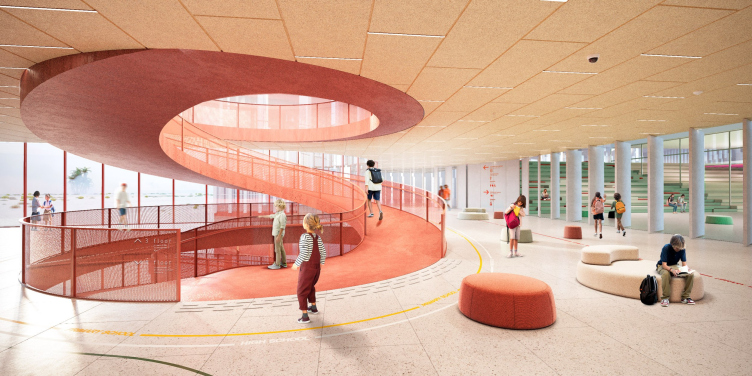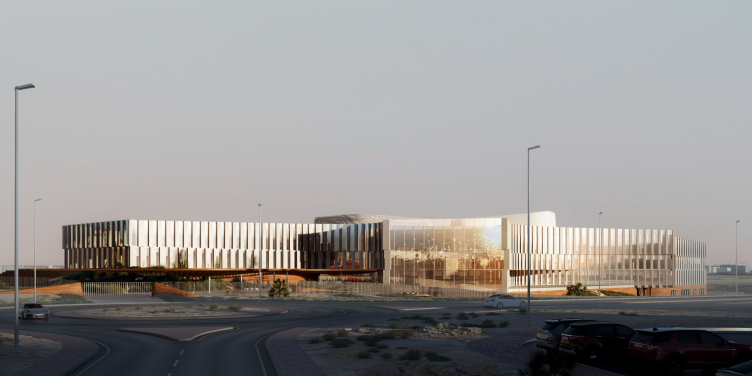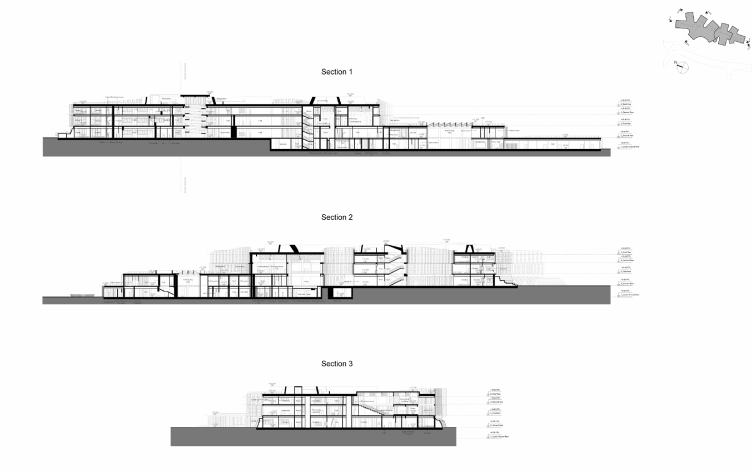The location of the school is not disclosed. What is known to this moment is that the configuration of the future building was influenced by an elongated land site, as well as a five-meter relief drop. Another two of important shape making factors were the hot climate, requiring shadowing, and parking lots that consumed a significant part of the land site: in Dubai, children are usually either driven by their parents to school, or they arrive by school bus.
Gymnasium Dubai
Copyright: © IND Architects
Considering the size of the school, designed for 1750 students, it was also important to fine-tune the logistics of the locomotion of the children, who will spend a significant part of the day in the building: not only do they study here, but also do sports, take meals at the cafeteria, and do extracurricular activities. In addition to the school, the complex includes a kindergarten and even a dorm for 60 students.
Our team worked carefully to immerse themselves in the context, including field trips and visits to international schools in Dubai. This provided insights into how educational institutions are structured in that country, and what cultural and social aspects need to be taken into account. For example, there is a requirement for a prayer room to be located in a school. When a kindergarten and school are simultaneously located in the same building, it is necessary to locate not only the kindergarten but also the entire elementary school space at ground level. Strongly influencing the organization of the site are the requirements for car and bus parking and traffic management. Among the specific local requirements is the mandatory shading of the site.
Gymnasium Dubai
Copyright: © IND Architects
The layout of the complex is rather loose: various functional blocks are “mounted” on a nonlinear axis, whose curves and bends, as well as unexpected changes of viewing angles, remind of a little street of some historic city. The relatively narrow corridors give way to a “square” with a lounge, an amphitheater, a gallery, or an exit to a terrace. One of the zones producing a wow-effect is a vertical connection between the floors designed as a “slide” ram: by using it, the children will be able to quickly reach the required classrooms, at the same time getting a share of light physical exercise.
Plan of the 1 floor. Gymnasium Dubai
Copyright: © IND Architects
Plan of the – 1 floor. Gymnasium Dubai
Copyright: © IND Architects
Gymnasium Dubai
Copyright: © IND Architects
On the outside, the diverse blocks of the school are united by a streamlined shell. It is planned that the facades will be composed of fiber cement panels and sun-proof glass that protects you from the heat, and at the same time lets in enough sunlight. The school’s inner yards are always in the shade, while on the outside contour the visitors are protected from direct sunlight by wooden pergolas.
Gymnasium Dubai
Copyright: © IND Architects
Gymnasium Dubai
Copyright: © IND Architects
The public premises are characterized by versatility: the amphitheater, the atrium, and the gym can be easily turned into studios or venues for holding various events, including celebrations, award ceremonies, and theater performances. The complex also provides for play areas, sports facilities, dedicated concert halls, and a swimming pool. The height difference on the site made it possible to hide the technical floor in the relief, as well as make individual entrances for kindergarten, elementary and high schools.
Gymnasium Dubai
Copyright: © IND Architects
Construction is scheduled to begin in May 2024, and it is expected to be completed by August 2026. According to RBC, now every second Russian developer is interested in entering the UAE market.
Gymnasium Dubai
Copyright: © IND Architects
Gymnasium Dubai
Copyright: © IND Architects

